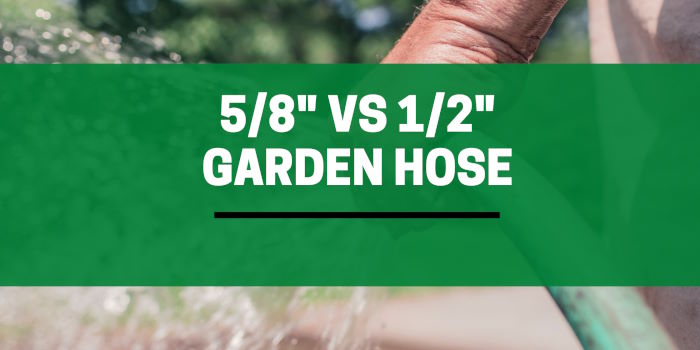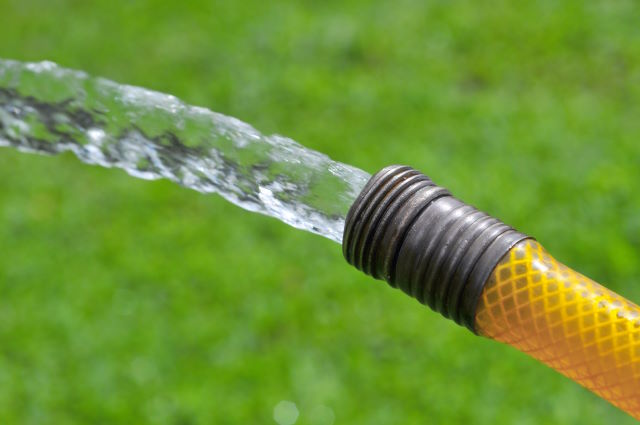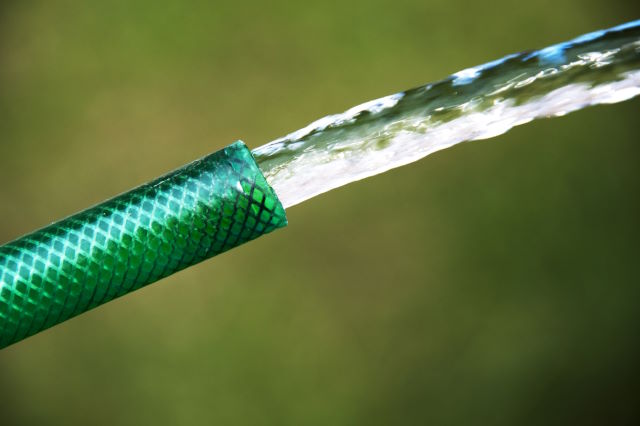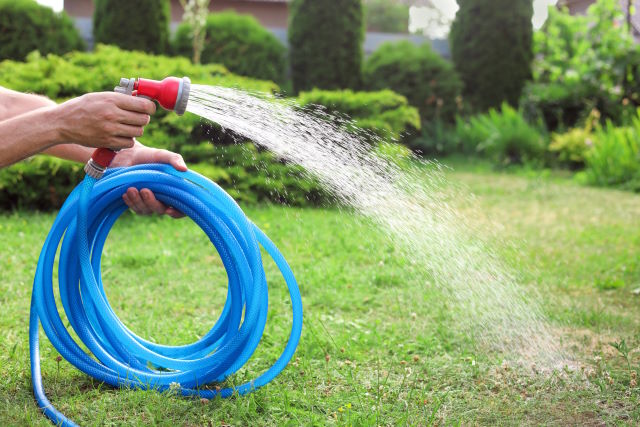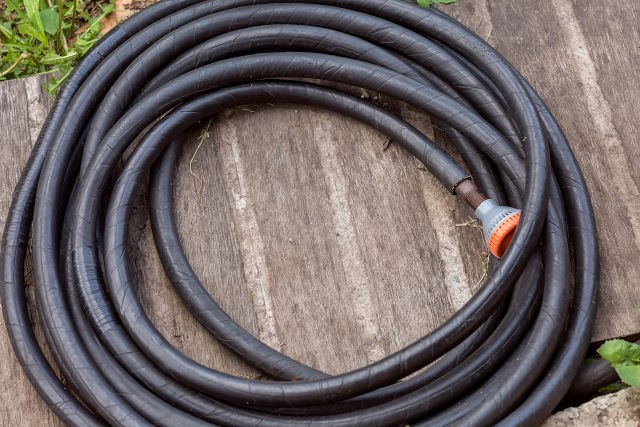Garden hoses may seem simple enough, but there’s much more than the eye perceives.
The sneaky difference between a 5/8-inch and a 1/2-inch hose could be the key to an Eden-like flourish or a scorched-earth scenario for your beloved plants or lawn.
This comparison guide will navigate you through the nitty-gritty world of garden hose selection so you can make a well-informed decision. So, trowel in hand, let’s dig into the ultimate comparison.
The main difference is the diameter, which affects the water flow. A 5/8-inch hose delivers more water volume but at a slightly slower velocity compared to a 1/2-inch hose. Therefore, if you prioritize higher volume over high velocity, choose a 5/8-inch hose. However, if your current hose frequently kinks up or you prefer slightly higher water velocity at the nozzle, switching to a 1/2-inch hose may be the better choice.
Contents
Understanding the Differences between 5/8″ and 1/2″ Garden Hoses
When it comes to purchasing a garden hose, choosing the right dimensions is crucial. Two of the most common options available in the market are 5/8-inch and 1/2-inch hoses. While both may seem similar, they have significant differences that are worth noting.
Think about your specific gardening needs, such as whether you prioritize water flow or maneuverability. For larger-scale projects like watering the lawn washing vehicles or filling a pool, consider a larger hose diameter, while a smaller diameter would be suitable for quick watering tasks or small gardens.
With that said, let’s dive deeper into how length and diameter affect performance.
Dimensions: Length and Diameter
The length of a garden hose is often a matter of personal preference and convenience. Longer hoses can cover more ground but come with increased weight that could make them harder to maneuver. Consider your yard size when selecting the right length of hose needed for your project.
On the other hand, choosing between a 5/8 inch or 1/2 inch hose centers on water flow capacity. Generally, pipes with bigger diameters have higher water flow rates than those with smaller diameters.
Additionally, there’s something called friction loss; this occurs as water flows through the garden hose, rubbing against its interior walls leading to some energy loss in the form of heat. Using a higher diameter hose results in higher pressure on water due to less friction loss when compared to using a smaller diameter one. A longer hose also results in a higher friction loss as there is a longer area for friction to occur.
It’s like trying to drink a thick milkshake through a thin straw versus drinking it using a wide bubble tea straw. It would take less time to finish it with a wider straw.
Lastly, keep in mind that choosing one over the other might involve some trade-offs…
While 1/2-inch hoses tend to be more maneuverable, they might not provide adequate water flow for demanding projects. Similarly, 5/8-inch hoses are more efficient for high water flow tasks but may come at the expense of weight and maneuverability.
Now that we’ve differentiated both hoses’ capacities let’s explore which one aligns with our specific gardening priorities.
Water Flow and Pressure Capabilities
Before deciding between hose widths it is essential to understand their respective water flow capabilities. When considering pressure, both types offer similar results.
A hose that is 5/8-inch in diameter and 25ft in length may deliver 22 gallons per minute (GPM). A 1/2-inch hose can deliver around 12GPM. This difference in the amount of water delivered isn’t significant enough to impact most watering activities but may be important for irrigation.
It’s important to note that these numbers assume standard residential water pressure at 40PSI.
If you have existing water pressure issues or other concerns about measuring water flow through your hose, it is recommended to consult with a plumbing professional to help determine the issue.
Evaluating Durability
Durability is a crucial consideration when selecting the right garden hose. Their lifespan depends on several factors such as construction material, number of layers (plies), and burst pressure.
Three primary materials are used in garden hose construction: PVC (vinyl), rubber, and polyurethane.
Vinyl hoses are the least expensive but have a shorter lifespan and a higher risk of kinking, so a hose reel is usually required. Rubber is flexible and durable, suitable for various climates and water pressure. Polyurethane is strong, flexible, lightweight, and free of toxic chemicals which often makes it a choice for providing a drinking water supply.
| Material | Pros | Cons |
|---|---|---|
| PVC (vinyl) | Least expensive | Shorter lifespan & high risk of kinking |
| Rubber | Flexible & durable; suitable for various climates & water pressure | Can be heavy |
| Polyurethane | Strong, flexible & lightweight; free of toxic chemicals | More expensive |
Additionally, the number of layers (plies) in a hose is an indicator of durability, with more layers generally indicating a stronger hose. A higher burst pressure indicates that the hose can handle more water pressure, which is important for those with high water pressure providers.
Suppose you opt for a hose with insufficient layers and burst pressure. In that case, it may not be strong enough to withstand the water pressure passing through, potentially causing leakages or bursts. Therefore, it’s crucial to consider such as this for any equipment.
When it comes to connections, brass connections – particularly cast brass – are more durable and less likely to leak than plastic options.
A quick connector can make attaching and switching between hoses easier; they’re becoming increasingly popular due to their improved build quality.
Material Construction and Lifespan
Material construction plays a crucial role in hose lifespan and overall durability. Generally, there are three main materials used in garden hose construction: PVC (vinyl), rubber, and polyurethane.
Amongst the three, vinyl hoses are the least expensive. However, they have a shorter lifespan and are more prone to kinking. Rubber hoses, on the other hand, are flexible and durable, suitable for various climates and water pressures, making them heavy-duty. Lastly, polyurethane hoses are strong, flexible, lightweight, and free of toxic chemicals.
The number of layers (plies) in a hose is also an indicator of its lifespan. More plies generally indicate a longer life without leaks. While deciding upon which material construction to go for, keep in mind the climate conditions of your region as certain materials would be more susceptible to cracking under extreme temperatures than others.
For instance, if you reside in an area with hot summers or freezing winters where the temperature range could vary up to 25 degrees Celsius or higher within six months apart from each other – you might want to consider going for PVC or vinyl garden hoses. These are less expensive than their counterparts but still offer decent durability during hotter & colder seasons.
Alternatively, you can store your hose when not in use or during extreme weather periods.
Regular maintenance is also essential to extend the lifespan of any gardening equipment.
Fittings and Connectors
Connectors and fittings play a vital role in ensuring that your garden hose doesn’t leak and fits perfectly with outlets around your home – enabling uninterrupted watering sessions every time.
Hose connections can be made of brass or plastic; plastic connections are easier to tighten but are more fragile and prone to breaking while brass connections – particularly cast brass – are more durable and less likely to leak, but may sometimes be more challenging when it comes to tightening to a faucet or when connecting multiples hoses together.
Quick connectors are becoming increasingly popular due to their uniqueness regarding ease of use and improved build quality. They allow for quick attachment swaps without twisting off or tightening.
Think of hose fittings and connectors as puzzle pieces; if they don’t fit, you might have a bit of a mess on your hands.
When making purchasing decisions, it’s important to consider the quality of the fittings and connectors and how they match up with your other watering equipment – this will save you time and money in the long run.
Types and Ease of Use
Garden hoses come in different types, each with unique characteristics that determine the ease of use. Here are some popular options:
- Vinyl: These are the most common garden hoses, lightweight, and affordable. They’re ideal for light tasks such as hand-watering plants. However, they tend to kink easily and quickly deteriorate in harsh weather conditions.
- Rubber: They’re more durable than vinyl varieties, resistant to kinking, and can withstand varying weather conditions. Rubber has a more extended lifespan and can handle higher water pressure than its vinyl counterparts.
- Polyurethane: The newest addition to garden hose material is polyurethane. It’s lightweight, flexible, strong, and free from toxic chemicals. However, it’s quite expensive compared to other materials.
When it comes to ease of use, quick connectors are becoming increasingly popular. They reduce the time needed to connect your hose to spigots or sprinklers and ensure a tight seal with no leakage. Garden hoses with ergonomic grips make them easier to hold for longer periods.
Weight and Flexibility
When choosing between a 5/8 vs 1/2 inch garden hose or any other size, weight and flexibility play an essential role. A heavy hose makes maneuvering problematic; however, a lighter one isn’t always the best option. Besides, consider the number of layers (plies) as it affects durability.
In general, a smaller diameter hose is typically lighter and easy to transport but may compromise water volume. Larger pipes are heavier but great for commercial applications requiring high-volume delivery.
Imagine having a 100-foot garden bed; lugging around a thick hose could be exhausting due to its weight while handling multiple kinks reduces the water flow virtually halving delivery capacity.
Also, consider memory retention if you are faced with limited storage space. Coiled garden hoses are ideal as they recoil for storage without losing water pressure or volume.
Think of it like choosing the right pair of shoes; if they are too big and clunky, you might get tired faster, but if you are too small, you may struggle to complete longer walks in comfort.
Ultimately, choosing between hose sizes depends on individual preferences regarding weight, flexibility, transportation, and ease of use. Understanding the different types available also ensures informed decision-making when selecting a hose best suited for your needs.

